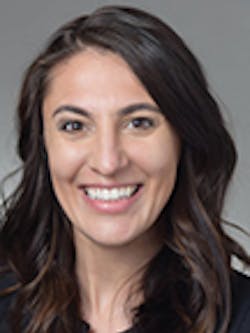Always be reflecting on your weaknesses and growth—evidence-based dentistry demands nothing less
Erinne Kennedy, DMD, MPH
Welcome to Pathways to Practice. In this monthly column, we will share the mindset, pathways, and strategies harnessed by today’s top new dentists. The goal is not only to show what’s possible, but to reveal why one path may be better for you—and how to make it happen.
My 91-year-old grandmother made a New Years’ resolution to “be more kind.” This is a bold statement that also applies to evidence-based dental research for two reasons, which I’ll lay out here.
First, my grandma recognized at some point that perhaps she lacked something (in this case, unconditional kindness) and second, she was willing to go through the growing pains of change at 91. Her willingness to embrace something new had me reflecting on the essence of lifelong learning and the profession of dentistry. In my career, I have had to challenge myself to look at what was possible instead of what was in front of me. Dentistry almost demands that you reflect on, accept, and proceed with change each and every year, no matter your age or years of experience.
I have had to evaluate and consider changing materials, business practices, dental technology, and dental protocols since I graduated in 2015. When I started in dentistry, I visualized making the world a healthier place through individual patients, beginning with their teeth and contributing to their whole-body health. I believe this is what steered me into a career in dental public health and education, a direction that has fused my passion for people and learning.
As a new dentist, I recognized a weakness of mine lay in how I did (or didn’t) critically evaluate dental literature. My preference was to read an abstract and look at the tables and then not do much with the information. As clinicians, we are called to practice at a higher level. I have challenged myself to dive into evidence-based resources and come to my own conclusions. I try to figure out why I am doing what I am doing on a daily basis.
I found that practicing evidence-based dentistry has three components: knowledge and expertise, the patients’ values and needs, and a supporting body of literature.1 Not only do you have to read the literature, but like my grandmother, you have to reflect on and evaluate your own level of competence and your ability to grow and apply the knowledge to the needs of your patient.
Since graduating, each year I focus on one area of dentistry to dive into and study. I try to become an expert. For you, it may be two or three topics. Last year, I had many young patients that presented with white spot lesions. I knew a few options, but I wanted to be as minimally invasive as possible, so I dove into the literature. I learned about remineralization procedures and resin infiltration. I started by reading a few of the articles and identifying the products, and then I reached out to companies for lunch meetings and phone calls with clinicians.
Then after I had gathered all of the facts, I reached out to two mentors, one of whom was Dr. David Rice. I know this is a simple example, but the confidence I gained from using these steps could be yours, too. When I finished, any treatment plan presentation I had to give was simple because I was educated and well versed in treating any white spot lesion that might present itself.
One of the other intimidating factors can be the sheer volume of literature available. To accomplish my goal well and truly understand the literature, I choose to read a few articles each week between patients. Although I haven’t found time to read every journal that is published, I have made a small dent in the volumes that are to be learned. Evaluate your own knowledge base and write down the areas you would like to learn more about in 2018.
Finally, yes, it’s true in your office you can make immeasurable changes in the lives of your patients, but the greatest change is teaching that skill, that passion, and that knowledge to others. You multiply your impact when you are generous with what you have. When you start this journey, share your knowledge with your peers. As you all know, the knowledge shared with just a few photos and a question is remarkable. You may not find joy reading all the commentary in online forum, but a private group text, online group, or better yet, an in-person local study club might provide the platform you need. Each of us holds the key to making people healthier from their teeth to their toes, as long as we can learn, change, and grow alongside our profession.
Author’s note: To connect with igniteDDS, visit ignitedds.com.
Reference
1. About EBD. ADA Center for Evidence-Based Dentistry website. https://ebd.ada.org/en/about. Accessed February 8, 2018.
Erinne Kennedy, DMD, MPH, graduated from the Nova Southeastern College of Dental Medicine in 2015. Currently, Erinne is a blogger and speaker for IgniteDDS. Also, she is pursuing a dental public health specialty, a master’s in dental education at Harvard School of Dental Medicine, and serves as an interim director at a local health center in Boston, Massachusetts. Contact Erinne at (937) 539-0629 or [email protected].

